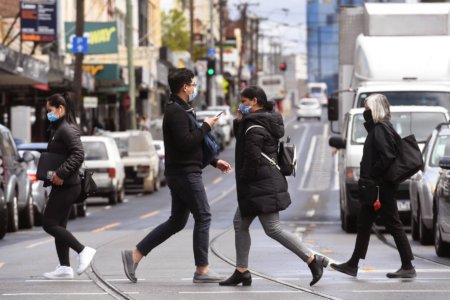
It is rarely appreciated that Australia makes money not just from what it digs out of the earth but also from what comes out of its mouth: English. The Australian government released a draft strategy for the English language teaching in Australia sector in early 2020. It was put on hold due to the pandemic, but we now have an opportunity to revamp the strategy to leverage Australia’s competitive advantage as a highly multilingual nation.
Pre-COVID, Australia cruised on its reputation as a welcoming, sunny locale with reputable institutions and attractive post-study work rights. Australia had a 15% market share of the 1.3 million people who travelled to an English-speaking country specifically to study English.
Being an English-speaking nation added to our value proposition. Traditionally, it’s been hard to play in the international education market without that trump card. In 2020, four of the five countries with the most inbound students were English-speaking: the US (1,075,496), the UK (551,493), Canada (503,270) and Australia (463,643). Fourth-placed China was the exception.
English language teaching in Australia: Billions in revenue are at stake
Is it possible to quantify the value of English language teaching in Australia? In dollar terms, yes. According to English Australia – which represents English-language providers in Australia – the global English-language teaching industry is worth over US$11.7 billion (A$16.1 billion).
The post-pandemic story is less rosy for Australia. A recent economic impact study conducted for English Australia shows the sector suffered $1.2 billion in direct losses (tuition fees and living costs) from COVID-19 in 2020. A further $1.5 billion will be lost as a result of English-language students not progressing into other parts of the education system, such as vocational and higher education.
The economic importance of international education to Australia is now well known. In the 2019-20 financial year, it was our fourth-largest export industry, adding A$37.5 billion to the national coffers and supporting 250,000 jobs.
More recently, July data showed university enrolments for international students were down 12% from a year ago. However, this pales next to the slump of 63% in the English-language intensive courses for overseas students (ELICOS) sector.
Clearly, the recovery of Australia’s international education industry is about more than universities. Even if borders open to international students in 2022, the ELICOS pipeline into vocational and higher education could take years to recover.
Time to refine the strategy
If there is a silver lining, it is this: we have a window of opportunity to rethink the value proposition of learning English in Australia. Why study it here, as opposed to anywhere else?
Before COVID struck, Australia was ahead of the curve in strategising around this question. The national education departments of all the major players produce glossy international education plans every few years. However, only Australia had taken the extra step of producing a delineated and interwoven strategy for its English-language sector.
The draft English Language Teaching International Engagement Strategy 2025 was released in the ill-fated month of February 2020. It was put on hold in light of the pandemic.
The draft strategy’s vision was for Australia to become “the global leader in the delivery of quality English language teaching”. The aim was to offer a first-class student experience, online flexibility and pathways into further education.
These remain worthy and attractive propositions. However, Australia has more to offer.
English language teaching in Australia can make the most of multilingualism
The strategy undersells an element of Australia’s cultural and linguistic identity – indeed, it’s not mentioned at all. We speak here of the nation’s rich tapestry of multiculturalism and multilingualism.
Despite its image as a nation of English speakers, Australia has no official language. Although English is the most widely used, more than 300 other languages are spoken, including Indigenous languages, Auslan, Mandarin, Arabic, Cantonese and Vietnamese. According to the 2016 Census, more than 25% of Australian households use a language other than English.
Many learners consider English as it is used in the UK, North America and Australasia the most desirable version of the language. However, it is not objectively better than the varieties of English used in the Philippines or India. As the use and teaching of English continue to expand beyond the traditional group of English-speaking countries, the pull factor of Australian international education may begin to wane – but only if we fail to recognise what else we have to offer the world.
Australia offers the advantage of immersing onshore international students in naturally occurring English. This is indeed a key selling point. However, Australia also has the opportunity to reimagine its framing of English for the post-pandemic global marketplace. This is a world in which multiple varieties of English are heard and used in combination with other languages.
Australia can rightly claim to be one of the most multicultural countries on Earth. Importantly, Australia is more diverse than its English-speaking competitors in the international education market. As the Australian Bureau of Statistics says:
“The Census shows that Australia has a higher proportion of overseas-born people (26%) than the United States (14%), Canada (22%) and New Zealand (23%). What about the United Kingdom, you say? Not even close (13%).”
Australia’s multilingual backdrop can be harnessed as a core part of English learners’ experiences. Being immersed in a context where English exists dynamically alongside other languages, likely including their own first language, has practical benefits for these students.
Interacting with people who use a range of languages, and have different ways of using English, also helps learners to become more effective communicators. Exposure to people with different cultural perspectives and practices allows them to develop intercultural communication skills in a range of real-world contexts, from the classroom to the supermarket.
When the government does eventually refresh the draft strategy, Australia should not be projected as a monolingual dinosaur. Instead, the strategy should highlight our status as a fluent speaker of world English and other global languages, with a timeless Indigenous linguistic heritage. Such an environment, after all, more closely resembles the material and virtual reality for which international students need to be prepared.![]()
Ben Fenton-Smith, International Director, Arts, Education and Law, Griffith University; Claire Rodway, Lecturer, School of Humanities, Languages and Social Science, Griffith University; Ian Walkinshaw, Senior Lecturer in Applied Linguistics, Griffith University, and Laura Gurney, Senior Lecturer, School of Education, University of Waikato
This article is republished from The Conversation under a Creative Commons license. Read the original article.










